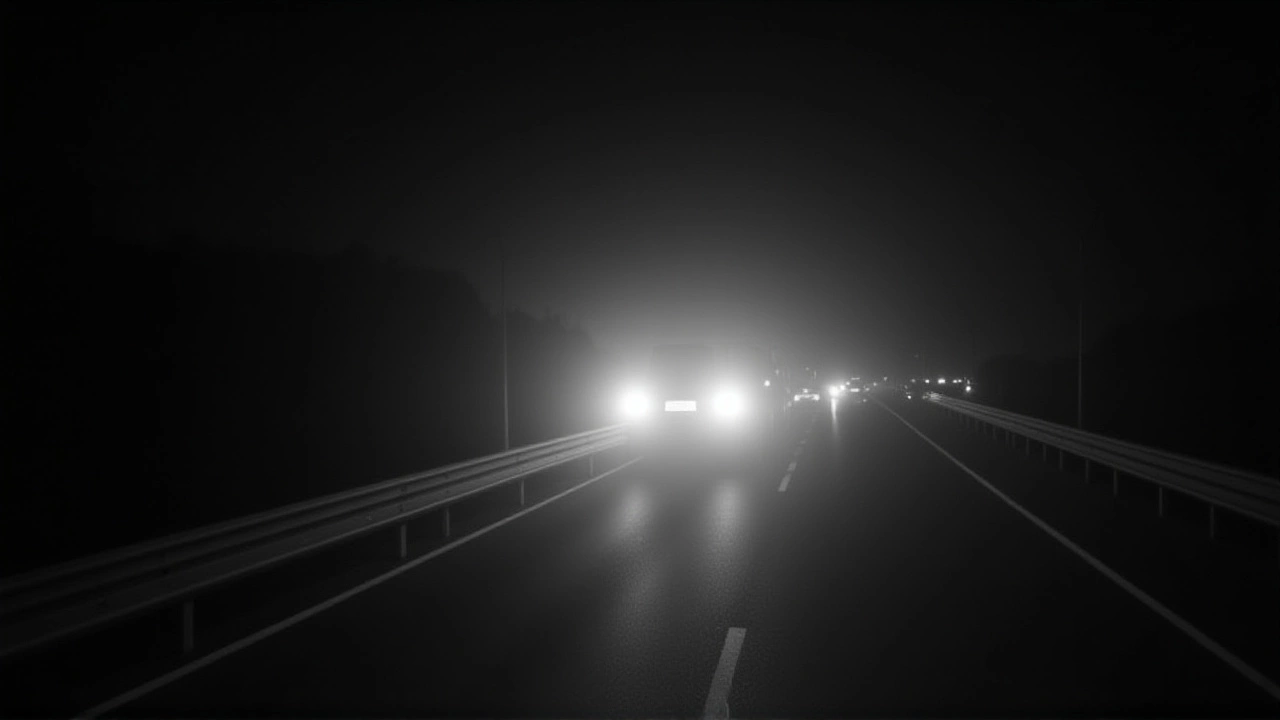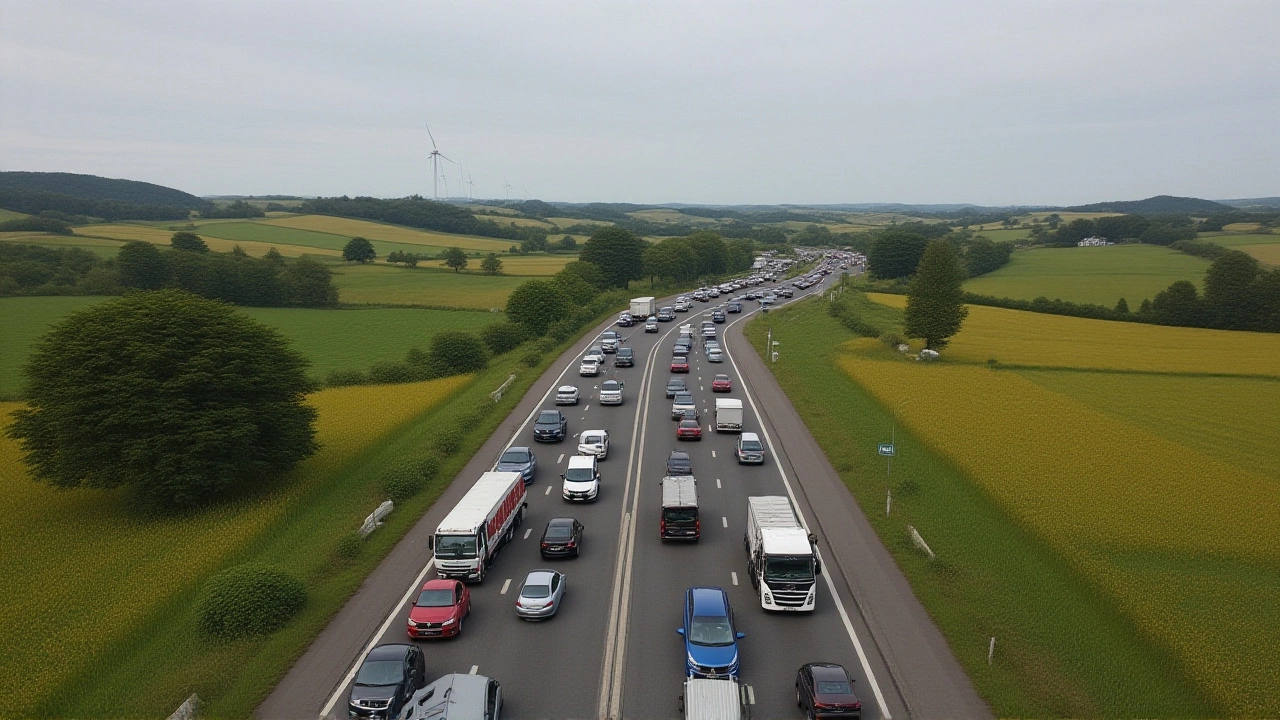At 10:50am on September 10, 2025, the M6 northbound near Junction 33 in Lancashire came to a standstill—not from a fire, not from a fallen tree, but from two cars that simply collided. No one was hurt. No ambulances raced with sirens. Just metal, broken headlights, and a highway paralyzed for hours. The Lancashire Constabulary called it a "damage-only collision," a bureaucratic phrase for what drivers on the ground knew all too well: another choke point in a stretch of road that’s become a magnet for trouble.
One Crash, Two Reports, One Confusing Narrative
The Blog Preston article that broke the news claimed a single incident. But its own headline mentioned "two crashes." That contradiction wasn’t just sloppy writing—it reflected a deeper confusion. Was there a second collision elsewhere on the M6? Or was it a misstatement? The Lancashire Evening Post had documented a nearly identical event just 24 hours earlier, on September 9, 2025, at 10:33am. That crash, between a car and a van, caused 45 minutes of delays. Now, the same spot, the same time of day, the same stretch of road—another stoppage, but this time, all lanes closed.It’s not coincidence. It’s pattern.
According to National Highways’ 2023 safety audit, Junction 33 recorded 17 accidents between Junctions 32 and 34 alone. That’s nearly one every three weeks. And with over 150,000 vehicles passing through daily, according to the agency’s 2024 census, even a minor collision can ripple across the region.
Why This Junction Is a Bottleneck
Junction 33 isn’t just an exit. It’s the gateway to Garstang, Lancaster, and the wider North West. The A6, which it connects to, is a historic route that still carries heavy commuter, freight, and tourist traffic. But the junction’s design hasn’t kept pace. The merge lanes are short. The signage is outdated. And with the ongoing Grimsargh Bridge temporary works just south in Preston, drivers are already navigating congestion before they even reach Junction 33."It’s like trying to pour a gallon of water through a straw," said one local trucker, who asked not to be named. "You’ve got lorries slowing down for the exit, cars cutting in, and then—boom—someone doesn’t see the brake lights in time. Happens every other week."
The Ripple Effect
When the M6 shuts down, the entire regional network feels it. National Highways issued alerts advising drivers to avoid the M6 between Junctions 32 and 34. The A6 overflowed. Buses were delayed. Emergency services diverted. The North West Ambulance Service and Lancashire Fire and Rescue Service were dispatched, though response times weren’t disclosed. No injuries meant no life-threatening emergencies—but delays in non-emergency transports, like dial-a-ride services for elderly residents, were inevitable.And then there’s the economic cost. A single hour of M6 closure in this corridor costs an estimated £180,000 in lost productivity, according to National Highways’ internal modeling. This disruption lasted over five hours. That’s nearly a million pounds in lost time.

What’s Next? A Pattern Demands Action
The Lancashire County Council has yet to issue a public statement. But behind closed doors, officials are reviewing the data. The fact that two major incidents occurred within 24 hours at the same location is not just alarming—it’s indefensible. There are no new roadworks scheduled here, no planned upgrades. Yet the evidence is stacking up: Junction 33 is a liability.Some experts point to the lack of variable message signs near the junction. Others cite poor lighting at dusk. A few suggest the merge lane from the A6 onto the M6 northbound is simply too short for today’s traffic volumes. What’s clear is that reactive measures—like closing lanes after a crash—aren’t enough. Proactive changes are needed: better signage, radar-triggered speed warnings, even a temporary traffic light system during peak hours.
For now, drivers are left with the same advice they’ve had for years: "Leave early. Take the A59. Or just don’t go."
Background: The M6’s Chronic Weak Spot
The M6 is Britain’s longest motorway, stretching 232 miles from Rugby to the Scottish border. But its most vulnerable section isn’t near Birmingham or Manchester—it’s here, in rural Lancashire. Junction 33 sits at the crossroads of commuter traffic, agricultural haulage, and holiday traffic heading to the Lake District. It’s not a high-speed zone. It’s a slow-down zone. And for years, safety audits have flagged it as a hotspot.In 2022, a similar crash led to a 90-minute closure. In 2021, a lorry rollover blocked all lanes for six hours. And now, in 2025, we’re back to the same spot, the same time, the same story. It’s not bad luck. It’s bad design.
Frequently Asked Questions
Why did the M6 northbound shut down completely after a "damage-only" crash?
Even without injuries, a collision involving multiple vehicles can block all lanes, especially on a narrow stretch like Junction 33. Emergency crews need space to work, tow trucks require clear access, and safety protocols demand full closure until debris is cleared and road integrity is confirmed. With over 150,000 vehicles daily, even a minor crash creates a domino effect.
Is Junction 33 really that dangerous?
Yes. According to National Highways’ 2023 audit, 17 accidents occurred on the M6 northbound between Junctions 32 and 34 in just one year. The combination of high traffic volume, short merge lanes, and proximity to the A6 makes it a collision hotspot. Two major incidents in 24 hours in September 2025 confirm a troubling pattern.
What’s being done to fix it?
As of now, no official upgrades are scheduled. The Lancashire County Council and National Highways are reviewing data, but public statements are absent. Local advocacy groups are pushing for radar speed signs and extended merge lanes, but funding remains unallocated.
How does the Grimsargh Bridge project relate to this?
While not directly causing the crash, the temporary traffic measures at Grimsargh Bridge add upstream congestion, forcing more vehicles into the M6’s mainline and increasing pressure on Junction 33. It’s a compounding factor—not the root cause, but one that makes the junction more vulnerable.
What should drivers do to avoid delays?
Avoid the M6 northbound between Junctions 32 and 34 during peak hours (7–10am and 4–7pm). Use the A59 as an alternative route to Lancaster, or take the A6 through Morecambe. Real-time alerts from National Highways’ app or Twitter feed are more reliable than radio updates, which often lag behind actual conditions.
Could this have been prevented?
Possibly. Radar-triggered speed warnings, better lane markings, and a longer merge lane could reduce rear-end collisions. A 2020 study by the Transport Research Laboratory found that similar junctions with these upgrades saw a 40% drop in low-speed crashes. The technology exists. The will to implement it doesn’t yet.
